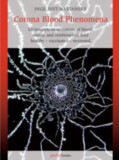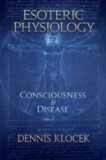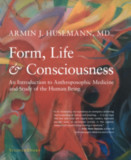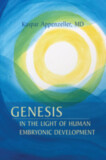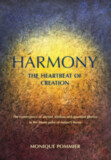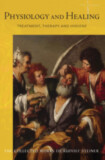The Silent Language of Life
Research into Formative Forces in Water Drops
- Publisher
Portal Books - Published
18th June - ISBN 9781938685477
- Language English
- Pages 200 pp.
- Size 9.5" x 12.5"
- Images 545 color images
The research published here—conducted over the course of fifteen years by Inge Just-Nastansky—reveals, through extensive illustrations, a side of nature that otherwise remains hidden to us.
The water drop—that small, transparent vessel—leaves behind remarkable structures after drying, structures in which its “experiences” are imprinted. Salt, minerals, gemstones, and plant organs—such as roots, stems, fruits, and seeds—are submerged in water for weeks or months. At regular intervals, samples are taken and dripped onto a microscope slide. After drying, characteristic and reproducible images of astounding harmony and beauty appear through the microscope. The variety of forms seems inexhaustible. We encounter in the phenomena under the microscope a language of images which in its lawfulness expresses another level of nature’s reality. The understanding of this creative world of life that lies behind the world of appearance develops through a living feeling and understanding of what is given as an active impulse in the images. “The silent language of life” is therefore inaccessible to a logical, abstract approach.
Body fluids (tears, saliva, cerebrospinal fluid, blood, and serum) are also a subject of research here. We perceive permanent structures with a saltlike character in the region of the nerve-sense system, whereas in the images of blood, we see ever-changing transformations under varying conditions. The necessary condition for everything that comes into existence is water as a mediator between idea and substance. All life processes originate in water.
“The work of Inge Just-Nastansky joins the ranks of the so-called ‘image-creating methods’ that have emerged in anthroposophical natural science. One thinks of the pioneer Lili Kolisko, who studied the coming to rest of liquids in rising images. For example, at full moon and at new moon radically different rising patterns of the silver salt solution are formed. Inge Just-Nastansky also shows the polarity of the droplet image at full moon and new moon. Macroscopy brings balance to microscopy.” — Armin Husemann, MD
This book was originally published in German as Die stille Sprache des Lebens: Bildekräfteforschung im Wassertropfen (SchneiderEditionen, Stuttgart, 2018).
C O N T E N T S:
Foreword by Prof. Dr. Bernd-Helmut Kröplin
Preface by Armin Husemann, MD
Introduction to the Research
Material and Method
Chapter I: Water and External Influences
1. The Drop
2. Sunlight Effect
3. Change of the Base
4. Air Effect
5. Water Turbulence
6. Circumferential Effects on Swirled Water
7. Transference
8. Color Effects
9. Thermal Effects
10. Cold Effects
11. The Dripper Changes: Water Drops after Eurythmy
12. Reflections on Chapter I
Chapter II: Salt between Substance and Form
1. Salt
2. Salt Process: Movement between Substance and Form
3. Turbulence and Dilution of a Salt Solution
4. Salt—Heat Drying
5. Salt and the Sun
6. Salt and “Plant-water”
7. Swirled Plant Salt in Water (Yam Salt)
8. Salt and “Mineral Water”
9. Salt Ash Water
10. Reflections on Chapter II
Chapter III: Minerals, Gemstones, Metals in Water
Chapter IV: Plants, Fruits, Seeds, Barks, and Ashes in Water
1. Plant Stem and Plant Root, Flowering Plant, Larva, Butterfly, Bee
2. Berries in Water, the Dark Core in the Center
3. Seeds—Kernels of the Plant in Water
4. Seeds of the Plant in Water: The Importance of the Seed Shell
5. Barks of Young Twigs and Trees in Water, the Cambium
6. Reflections on the Seed in the Center and the Cambium
7. Charcoal and Ash of the Plant in Water: Mistletoe Charcoal in Water
8. Exposed and Unexposed Plant
9. Four Preparations from Rudolf Steiner’s Agricultural Course
10. Peat from Ireland and the Swabian Alps, Refined Peat
11. Reflections on Chapter IV, Sub-chapters 8–10
Chapter V: Human Fluids
1. Fluids from the Sensory Area
2. Cerebrospinal Fluid (CSF)
3. Pleural Exudate and Breath
4. Blood
5. Drop Communication
6. Human Serum
7. Patient Serum before and after Treatment
8. Reflections on Chapter V
Three Phenomena
Conclusion and Acknowledgments
References
Inge Just-Nastansky, MD
Inge Just-Nastansky, MD, is a general practitioner based in Stuttgart. Born in Cologne in 1942, she embarked on her medical journey by obtaining her degree in medicine from Hamburg. Following her graduation, she dedicated three years to research at the UKE/Hamburg, followed by six years serving as an assistant doctor in pediatric and adult surgery.
In 1981, she assumed the responsibilities of a large rural practice in the northern Black Forest, where she practiced for eight years. In 1989, her interests shifted towards eurythmy studies in Stuttgart, culminating in the attainment of her diploma in 1993. Subsequently, she pursued a year-long eurythmy therapy training program in Stuttgart.
After a two-year stint as a school doctor, she returned to Stuttgart Bad-Cannstatt to establish her own practice, where she diligently served patients for seventeen years until 2014. Since 2001, she has been actively engaged in water drop research, alongside her lecturing endeavors.



